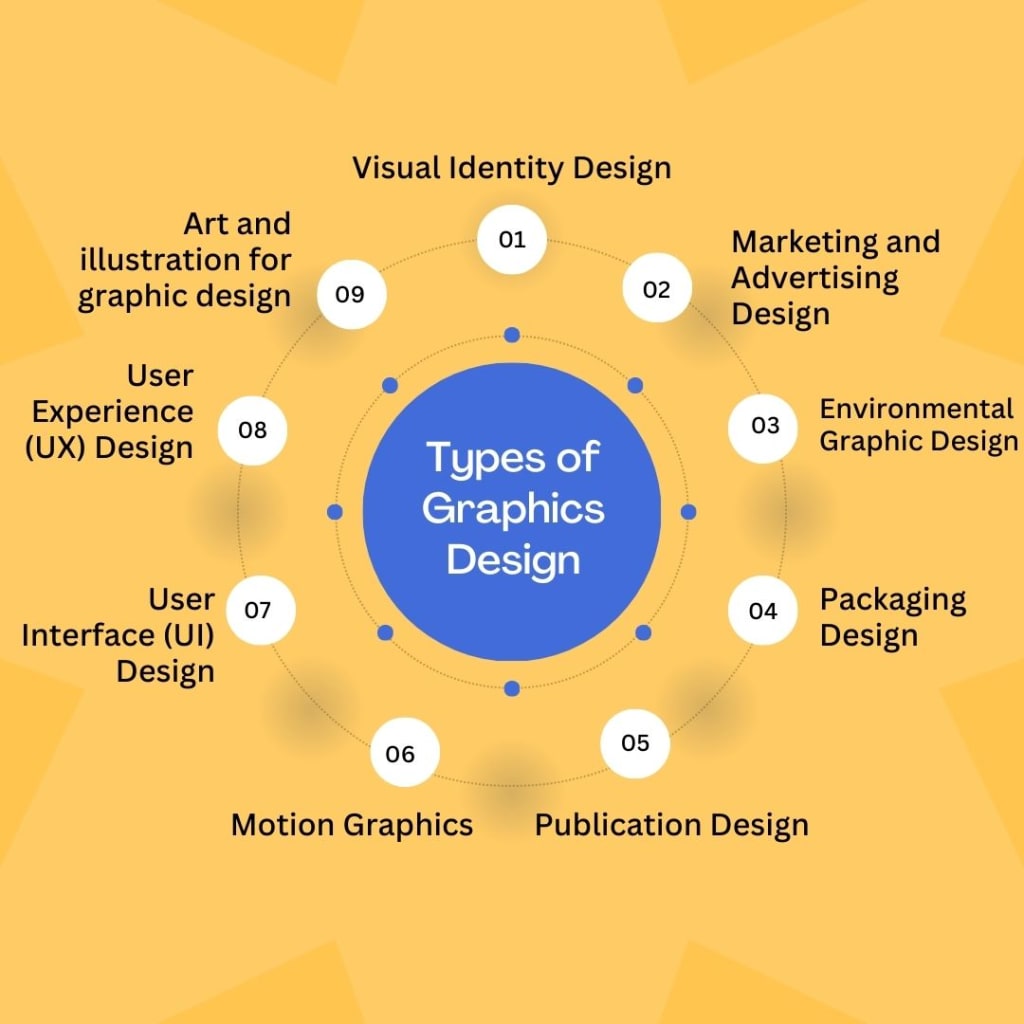Exploring the World of Graphic Design: Understanding Different Types
Explore the diverse world of graphic design types - from branding to UI/UX and motion graphics. Learn how each plays a vital role in visual communication!

In today's visually driven world, graphic design plays a pivotal role in shaping how we perceive information, products, and brands. From captivating advertisements to user-friendly websites, graphic design encompasses a vast array of elements that contribute to effective communication and aesthetic appeal. As businesses and individuals alike recognize the importance of visually engaging content, understanding the various types of graphic design becomes crucial for creating impactful designs that resonate with target audiences. In this comprehensive guide, we delve into the diverse landscape of graphic design, exploring its different types and their unique characteristics.
1. Visual Identity Design
Visual identity design, often referred to as branding, focuses on creating a cohesive visual representation of a brand or company. This type of graphic design involves developing logos, color schemes, typography, and other visual elements that embody the essence of the brand. By crafting a distinct visual identity, businesses can establish recognition and build trust with their audience, ultimately fostering brand loyalty and differentiation in the market.
2. Marketing and Advertising Design
Marketing and advertising design revolves around creating compelling visuals for promotional campaigns across various platforms. From print advertisements to digital banners, this type of graphic design aims to capture attention, convey messages, and drive action. Graphic designers in this field must possess a keen understanding of target demographics, market trends, and effective communication strategies to create impactful designs that resonate with consumers and achieve marketing objectives.
3. Publication Design
Publication design encompasses the layout and visual presentation of printed materials such as magazines, newspapers, books, and brochures. This type of graphic design involves arranging text, images, and other elements in a harmonious and engaging manner to enhance readability and visual appeal. Publication designers must consider factors such as hierarchy, grid systems, typography, and image placement to create visually compelling layouts that effectively convey information and captivate readers.
4. Packaging Design
Packaging design focuses on creating eye-catching and functional packaging for products. Whether it's a box, bottle, or bag, the packaging serves as the first point of contact between the consumer and the product. Effective packaging design not only attracts attention on the shelf but also communicates important information such as brand identity, product features, and usage instructions. Graphic designers in this field must balance creativity with practicality to design packaging that stands out in a crowded marketplace while meeting the needs and expectations of consumers.
5. UI/UX Design
UI (User Interface) and UX (User Experience) design are essential aspects of creating intuitive and engaging digital experiences. UI design focuses on the visual layout and interactive elements of digital interfaces, such as websites, mobile apps, and software applications. On the other hand, UX design involves understanding user behavior, conducting research, and optimizing the overall user experience to ensure ease of use, accessibility, and satisfaction. Graphic designers specializing in UI/UX design play a crucial role in crafting seamless and enjoyable digital interactions that delight users and drive engagement.
6. Environmental Graphic Design
Environmental graphic design involves the creation of visual experiences within physical spaces, such as retail stores, museums, airports, and corporate offices. This type of graphic design integrates signage, wayfinding systems, environmental branding, and architectural elements to enhance the user experience and create memorable environments. By strategically incorporating graphics and visuals into the built environment, environmental graphic designers help to communicate information, evoke emotions, and shape perceptions within physical spaces.
7. Motion Graphic Design
Motion graphic design combines graphic design principles with animation techniques to create dynamic and engaging visual content. From animated logos to explainer videos, motion graphics are widely used in digital media, advertising, entertainment, and online content. Motion graphic designers utilize software tools such as Adobe After Effects and Cinema 4D to bring static designs to life, adding movement, transitions, and visual effects that captivate audiences and convey messages in a compelling manner.
In conclusion, graphic design encompasses a diverse range of types, each with its own unique characteristics and applications. Whether it's shaping brand identities, communicating messages, or creating immersive digital experiences, graphic designers play a pivotal role in shaping the visual landscape of our world. By understanding the different types of graphic design and their respective roles, businesses and individuals can leverage the power of visual communication to engage audiences, foster connections, and achieve their goals effectively.
About the Creator
Christina Bair
I've been a photographer and photo editor for about 10 years now. Check my website: https://www.adeptclippingpath.com/photo-retouching-service/






Comments
There are no comments for this story
Be the first to respond and start the conversation.